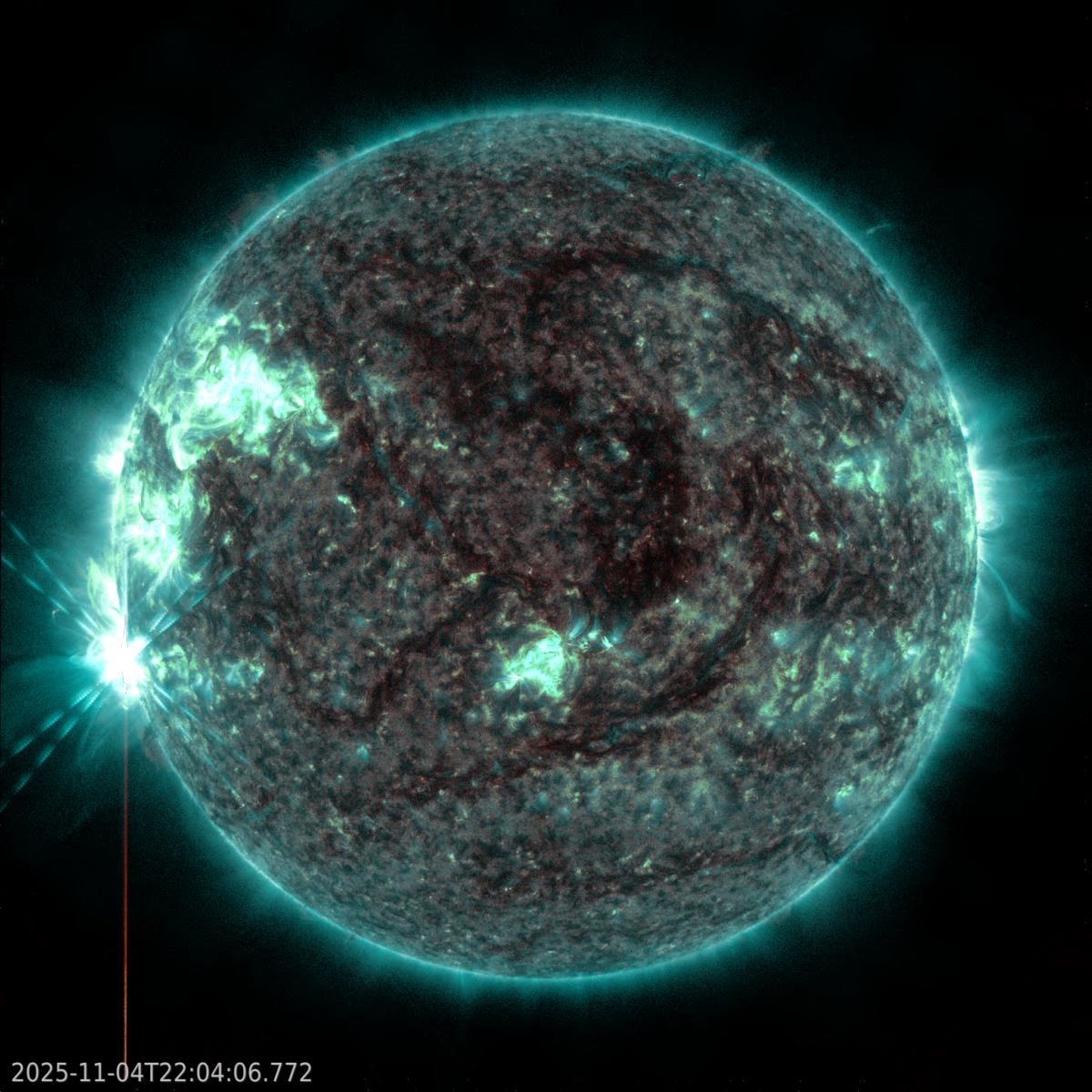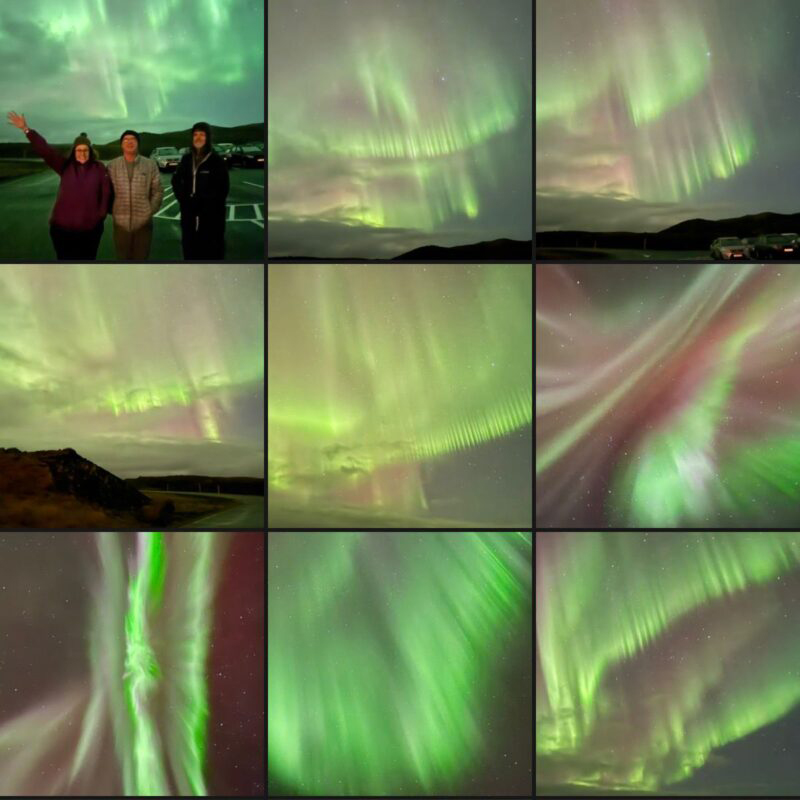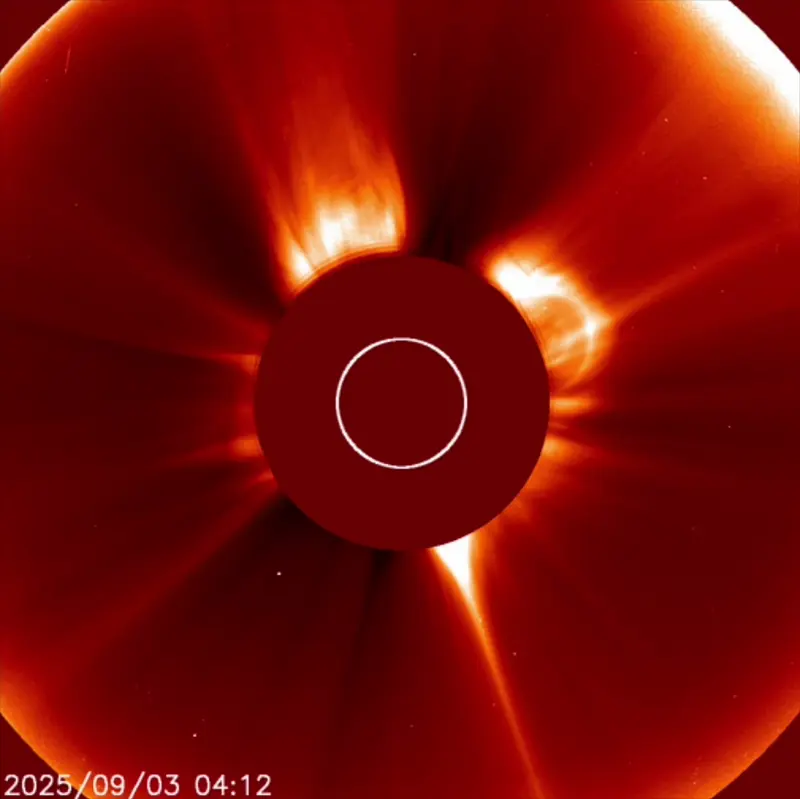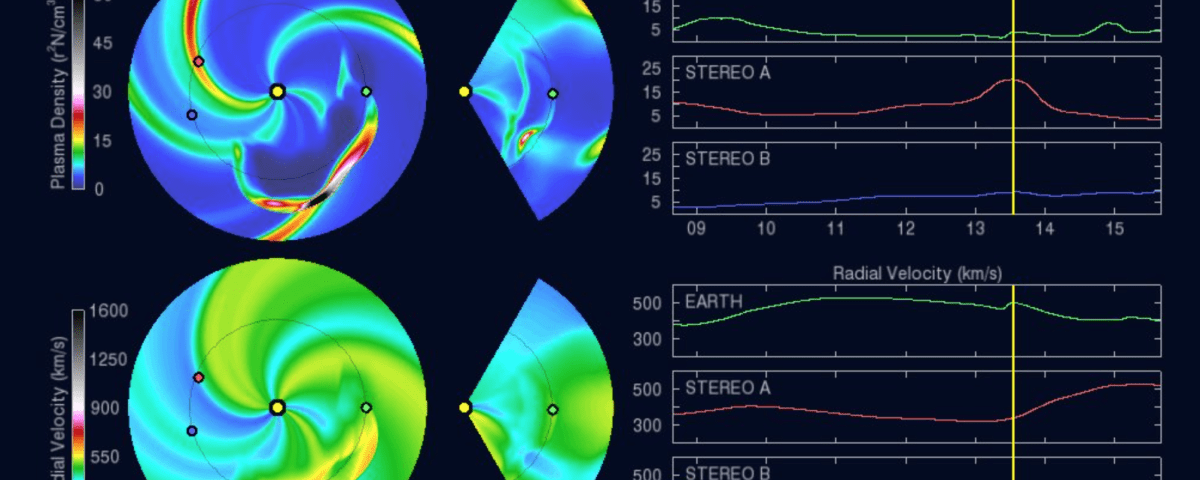
NOAA active region AR12087 began making its activity apparent in SDO well before it became visible on the Earth facing solar disk. Solar flares from the region became visible in the first week of June. On June 10, the region was almost on the visible disk when it let of an X2.2 flare that peaked at 11:42 UT. Shortly thereafter, another flare, an X1.5 peaked around 12:52 UT then a third X flare, an X1.0 peaked on June 11 at 9:06 UT.
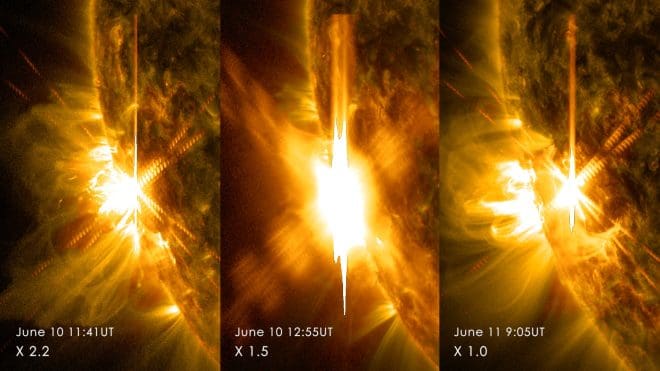
Three X-class flares erupted from the left side of the sun June 10-11, 2014. These images are from NASA’s Solar Dynamics Observatory and show light in a blend of two ultraviolet wavelengths: 171 and 131 angstroms. The former is colorized in yellow; the latter, in red.
Image Credit: NASA/SDO
The eruption that produced the X2.2 flare also threw off material giving a small coronal mass ejection, CME 1.
 The next eruption giving the X1.5 flare was much more eruptive giving a fast, wide CME, CME 2.
The next eruption giving the X1.5 flare was much more eruptive giving a fast, wide CME, CME 2.

The second, larger CME quickly caught up with the first CME and the two CMEs combined to make one. This type of event, a CME overtaking another, merging into one CME is called a “cannibal CME”. The YouTube video below shows SDO/AIA 131 images along with difference images including the first 2 X-flares from AR12087. The difference images make it much easier to see that the X1.5 associated event was much more eruptive. This was the second CME.
Initial analysis of these events by space weather forecasters at NOAA determined that the combined event would completely miss Earth. After further investigation, the forecasters determined that the event would mostly miss Earth but that there is a small probability of a glancing blow. Their estimates are that the merged CME should reach Earth around 13 UT on June 13 with a minor geomagnetic storm at the most but it could be up to a G2 geomagnetic storm. That is a decent storm level that could give aurora into the northern US. The figure below shows a snapshot of the NOAA ENLIL model of the event. The top part of figure shows the density estimate and the bottom part of the figure shows the velocity estimate for the model. The traces on the right show slices of the model at Earth, STEREO A, and STEREO B.
So it looks like the possible geomagnetic event at Earth, midday June 13 is going to be very minor. Perhaps the combined CME could increase the impact but we will just have to wait and see. Fingers crossed for some nice aurora.
credit: NASA/ESA/NOAA/SDO/SOHO



